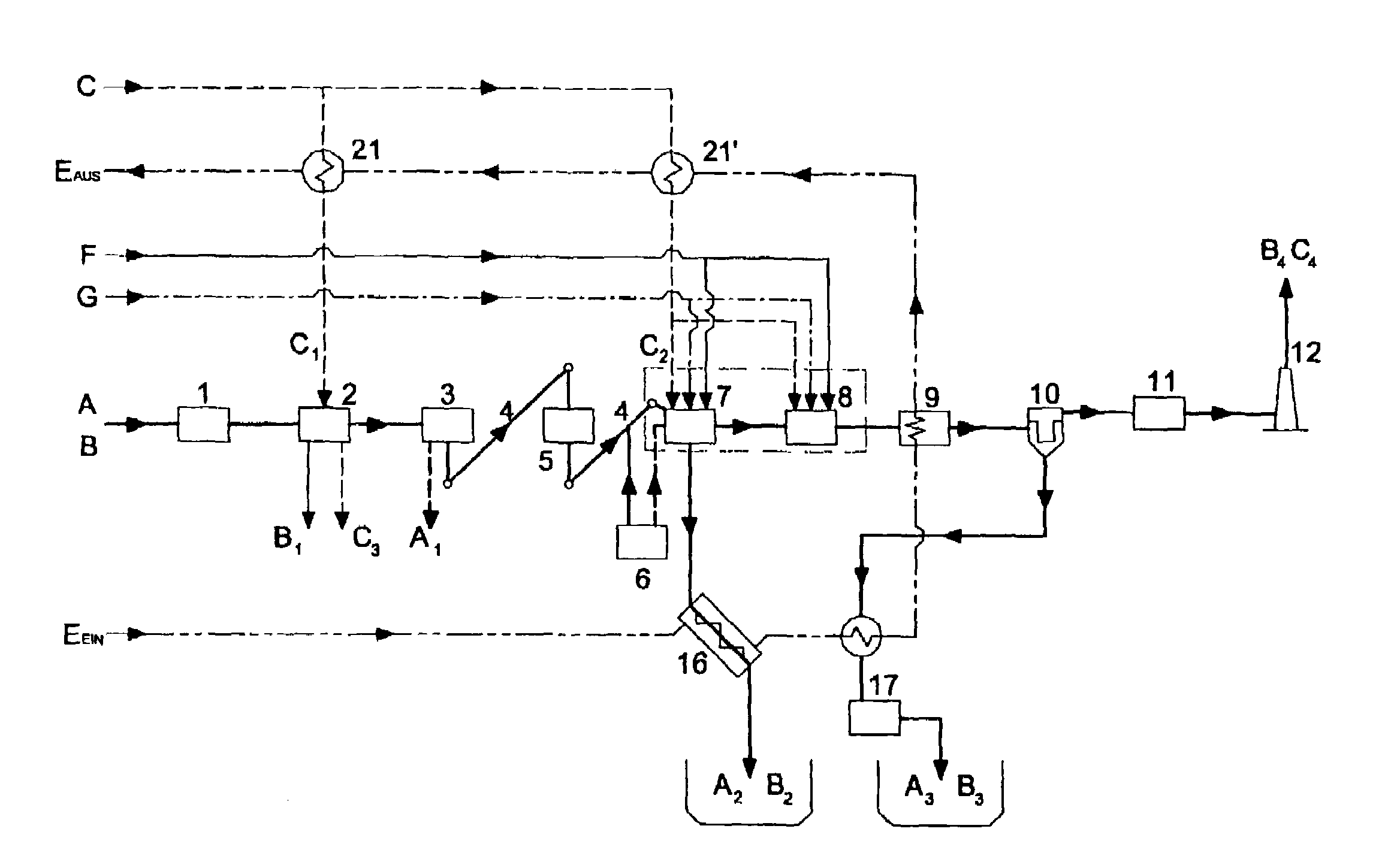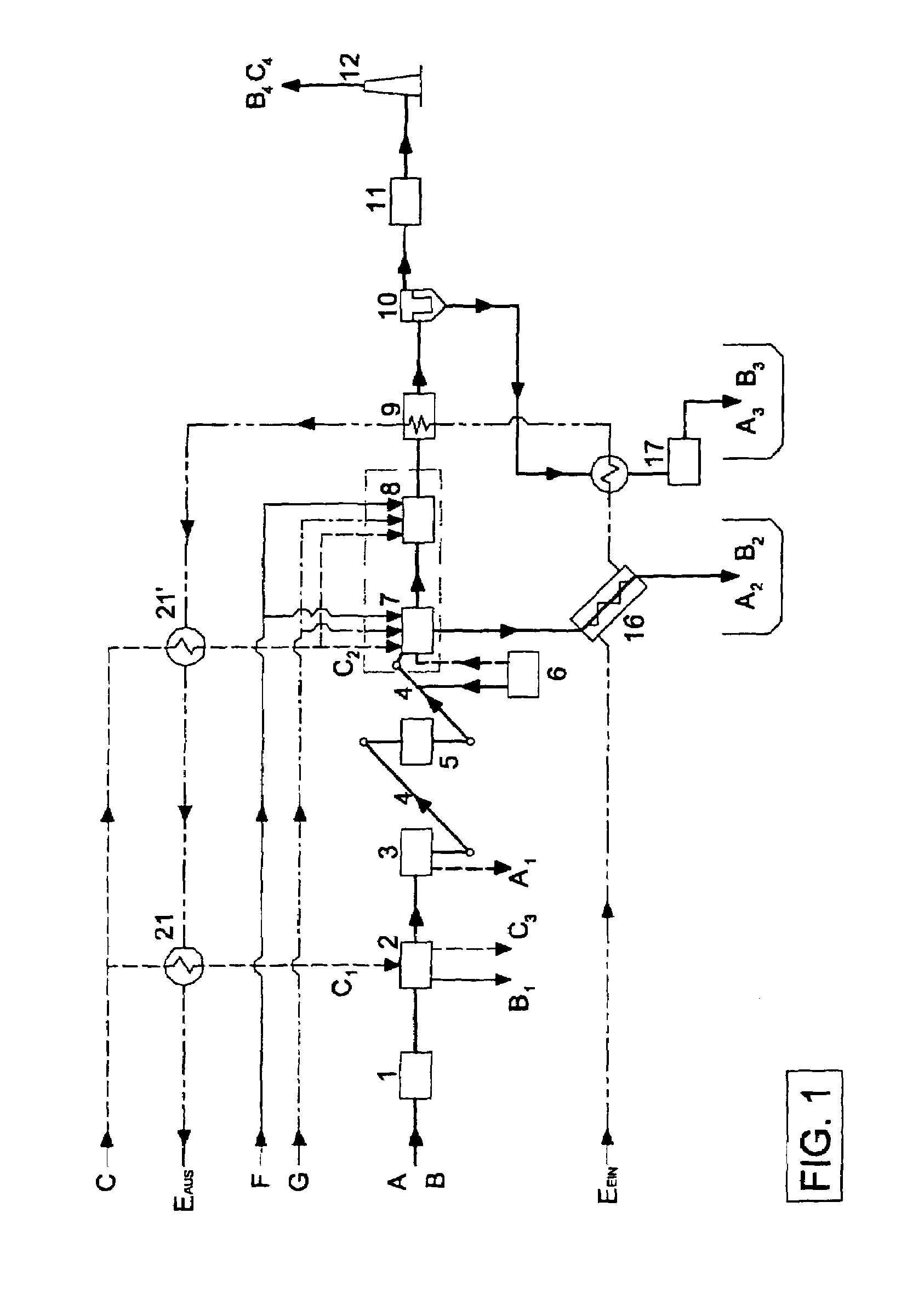Process and apparatus for treating biogenic residues, particularly sludges
a biogenic residue and processing equipment technology, applied in lighting and heating equipment, combustion process, drying, etc., can solve the problems of sludge disposal, difficult use, and limited disposal of waste, and achieve the effect of decentralizing the treatment of biogenic residues
- Summary
- Abstract
- Description
- Claims
- Application Information
AI Technical Summary
Benefits of technology
Problems solved by technology
Method used
Image
Examples
Embodiment Construction
[0060]Referring now specifically to the drawings, wet sludge consisting of dry sludge A and supplied water B is fed to the wet sludge storage container 1 and stored intermediately there. In general, the wet sludge storage container can accommodate sludges having any consistency. Provision is also made for mixing of sludges with different consistencies.
[0061]The sludge is fed from the wet sludge storage container 1 to the drying unit. Drying is carried out by means of a low temperature drying system 2 which dries the sludge slowly in an environment of a maximum of 60 to 70° C. under aerobic conditions. The drying system 2 is modular in design. It is possible to increase the drying capacity and to make an adaptation for wet sludge with a higher water content. The air needed for drying is preheated by the waste heat of the thermal treatment system 7, 8 and fed to the drying system. Water B1 from the stream of wet sludge supplied is discharged from the low temperature drying system 2. T...
PUM
 Login to View More
Login to View More Abstract
Description
Claims
Application Information
 Login to View More
Login to View More - R&D
- Intellectual Property
- Life Sciences
- Materials
- Tech Scout
- Unparalleled Data Quality
- Higher Quality Content
- 60% Fewer Hallucinations
Browse by: Latest US Patents, China's latest patents, Technical Efficacy Thesaurus, Application Domain, Technology Topic, Popular Technical Reports.
© 2025 PatSnap. All rights reserved.Legal|Privacy policy|Modern Slavery Act Transparency Statement|Sitemap|About US| Contact US: help@patsnap.com



